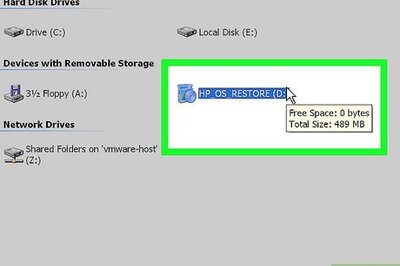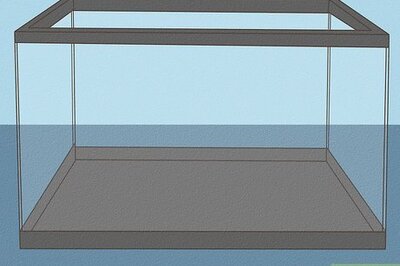
views
Ovaries are a part of the female reproductive system that produces and releases eggs (oocytes) into the reproductive tract during ovulation that takes place roughly in the middle of each menstrual cycle. The ovaries also in charge of making the hormones oestrogen and progesterone. An ovarian cyst is a sac filled with liquid or semiliquid material that arises in an ovary . Although the discovery of an ovarian cyst causes considerable anxiety in women owing to fears of malignancy, the vast majority of these lesions are benign.
Ovarian cysts are common in women and can develop due to different reasons. They are seen in about 25% of women of reproductive age group in India. An ovarian cyst is a fluid or semisolid material-filled sac that forms on or within one or both of your ovaries. In your pelvis, your ovaries are small organs that play a key role in holding egg cells and making hormones. The size of a cyst can vary and larger cysts may lead to more complications. Ovarian cyst can sometimes go unnoticed too if they are smaller in size and they may not even cause any symptoms. Women with hormonal problems, PCOS or with endometriosis have higher chances of developing ovarian cysts. These can be treated by hormonal treatment or surgery depending on the severity of the cyst.
WHY WOMEN DEVELOP OVARIAN CYSTS
Pelvic infections, hormonal problems and even pregnancy complications can lead to development of ovarian cyst. However, not all of them are dangerous and some of them can be managed with ease.
Signs and symptoms:
Most patients with ovarian cysts are asymptomatic, with the cysts being discovered incidentally during ultrasonography or routine pelvic examination. Some cysts, however, may be associated with a range of symptoms, sometimes severe, including the following:
- Pain or discomfort in the lower abdomen
- Changes in bowel movements, such as constipation
- Pelvic pressure causes tenesmus or urinary frequency
- Menstrual irregularities
- Precocious puberty and early menarche in young children
- Abdominal fullness and bloating
- Sever Pain and drop in blood pressure if the cyst rupture and causes excess bleeding
Endometriomas: These are associated with endometriosis, which causes a classic triad of painful and heavy periods and dyspareunia
Underlying malignancy may be associated with early satiety, weight loss/cachexia, lymphadenopathy, or shortness of breath related to ascites or pleural effusion
Diagnosis:
Transvaginal ultrasound is the preferred imaging modality for assessment of a suspected pelvic mass.
Laboratory tests, although not diagnostic for ovarian cysts, may aid in the differential diagnosis of cysts and in the diagnosis of cyst-related complications. Studies include the following:
Serum biomarker testing:
Cancer antigen 125 (CA125) – The finding of an elevated CA125 level is most useful when combined with an ultrasonographic investigation while assessing a postmenopausal woman with an ovarian cyst
hCG, L-lactated dehydrogenase, alpha-fetoprotein, and inhibin may be helpful if a less common histology is suspected
Management:
Many patients with simple ovarian cysts found through ultrasonographic examination do not require treatment. In a postmenopausal patient, a persistent simple cyst smaller than 10 cm in dimension in the presence of a normal CA125 value may be monitored with serial ultrasonographic examinations.
Pharmacologic therapy:
Oral contraceptive pills (OCPs) protect against the development of functional ovarian cysts. Existing functional cysts, however, do not regress more quickly when treated with combined oral contraceptives than they do with expectant management.
Laparotomy and laparoscopy:
Persistent simple ovarian cysts larger than 10 cm (especially if symptomatic) and complex ovarian cysts should be considered for surgical removal.
(Inputs by Dr Pritam Kataria, Consultant, Medical Oncology, Sir H.N. Reliance Foundation Hospital)



















Comments
0 comment